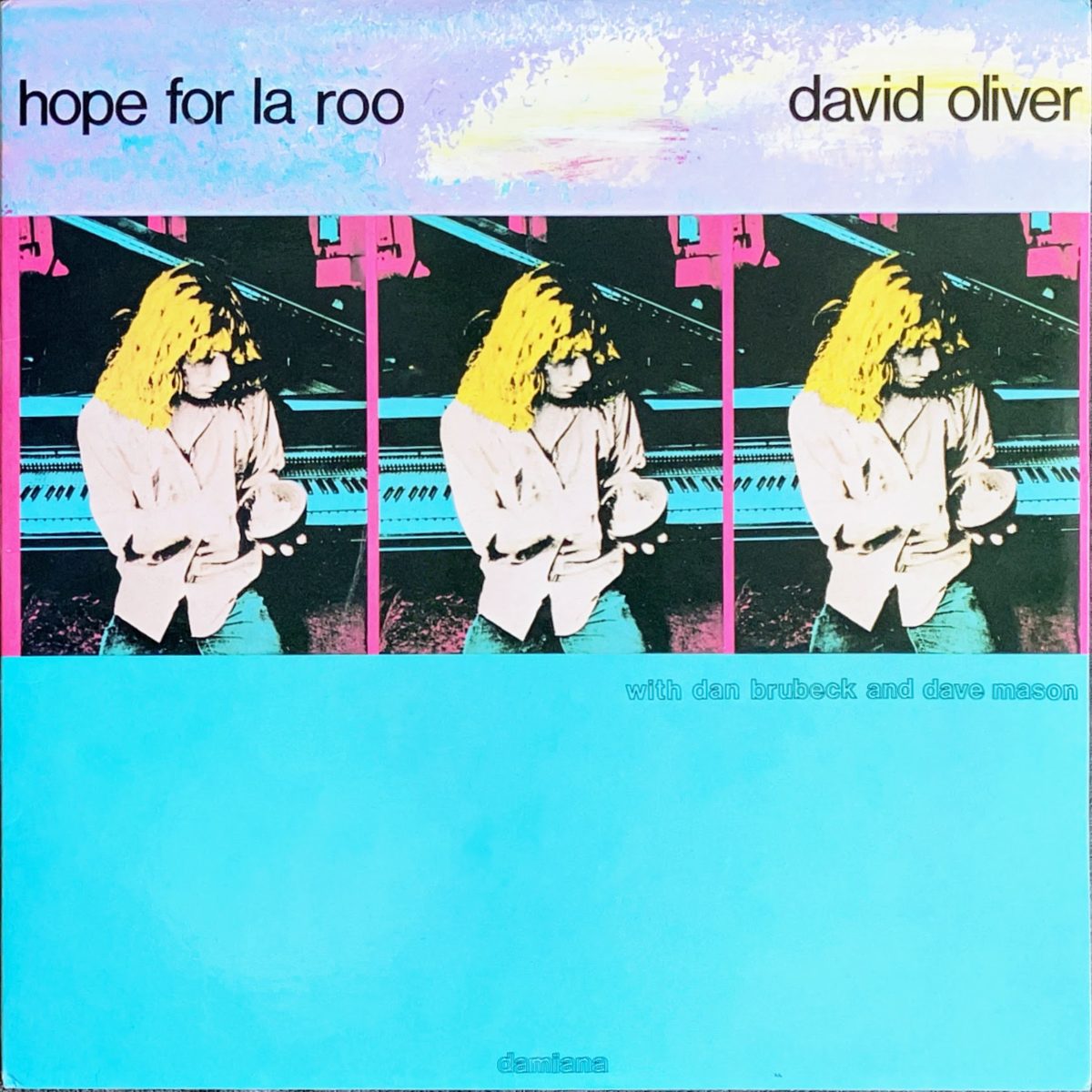
It’s not often that I review something that has me digging through my old piano-playing notes, yet here I am, looking for the right words to convey the construction of sheer joy coming from David Oliver’s music (and specifically his, Hope For La Roo). ‘Trills’, ‘octave runs’, ‘arpeggios’, ‘flageolet’, are some of the not-so-random words I’m picking out, at the moment. Yet, there’s tons more in David Oliver’s Hope For La Roo that I can’t pinpoint, emotional stuff, that susses out something special from people’s sometimes little appreciated, percussive instrument: the piano.
As noted elsewhere, David began his professional music career by studying music composition, jazz piano, and mallet percussion in Cincinnati’s College Conservatory of Music (CCM). Eventually, he’d return to his homebase in Woodstock, New York to study “world music” at Kingston’s Creative Music Studio (CMS). However, little is known about the still very reclusive musician.

One can only imagine how David’s studies in Woodstock, NY led to the expansive vision of jazz he’d imagine through his earliest work. In the late ‘70s, musicians like Don Cherry, the Art Ensemble of Chicago, Ornette Coleman and Pat Metheny were a few (of the select) to workshop with students at the CMS.
Rather than run away towards noodly, “abstract” or “free” styles, it appeared that the burgeoning third way movement, one urging musicians to retouch with different sorts of roots music, spurred David to absorb the influence of his beloved home and try to transmute it with various experiments with non-Western music. Taking to heart Ornette Coleman’s ideas on “harmolodics”, creating a free music rooted not in dexterity or technique but in true expression of one’s feeling, David pursued his own music on his dime.
1982’s Lizard Grows On You presented David Oliver’s vision of third way music. Absorbing the sounds and instruments of Africa and Asia, on xylophone, marimba, bells and piano, David would perform multi-layered, polychromatic music that felt of no place – neither jazz, New Age, or experimental – and aimed for the hypnotic realms of contemporary minimalist music. Here we got to hear on songs like “Joy Is Living” and “Inside Your Garden” a genuinely different kind of piano-playing touching on the worlds of Steve Reich and Terry Riley as much as the kindred spirits found in traditional Javanese and polyrhythmic African music.
David Oliver’s Damiana Records would grant him the freedom to simply create a wandering style of music, to take the reins of its sales, and put his stamp – from music to record sleeve – on music that one couldn’t easily slot in any genre. Then, just two years later, he’d convince two friends (Dan Brubeck and Dave Mason) to add choice accompaniment to his next work, Hope For La Roo, where the more esoteric parts of his debut were replaced with a fuller canvas.
Opening track, “Carillion Children” is the entryway to his experiments with piano and percussion playing. On it David would hit clusters of notes in the same register to create sonorous music (once joined by his assorted percussion) hitting on jubilant notes of healing music.
Recording in two days at the beginning of March and at the end of May, 1984, in Carla Bley and Michael Mantler’s Grog Kill Studios in Woodstock, NY, Hope For La Roo presented a bit of that tonal, warmer, change in experimental jazz music that was less “mental” and more experience. Questing to touch a listener’s soul, David pivoted to making music that was like a fresh, spring day, joyful and forward-thinking.
So, you get compositions like “Hope For La Roo” rippling with dual pianos, playing in and around each other’s notes, falling with melodies cascading through like a river rippling from defrost. And you get short, sweet vignettes like “Willow” that remind (or at least remind me) of the gorgeous trills of Listz “modernized” with heartwarming ideas that just paint the picture of rural America. Others like “Shadow” and “Blue Fallen Star” strive for arabesque nocturnal jazz.
Going back, I keep coming to songs like “Purple Day” and “Eye Kiss”. On the former, long-form percussive experimentation led to exciting hybrid ideas where David’s melodic mallet technique is as expressive (in different ways) as to his piano-based work. On the latter, the always-there ghost of Chopin arises allowing David to surround us with waves upon waves of melody. It’s the most “classical” of tracks, yet, it speaks volumes to the audacity of hope (a hope for joy) any simple instrument can produce. Thank the heavens, David found a way to dance with this one.
